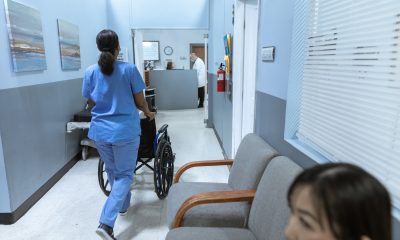Business and Economy
PH needs to invest in infra to back electronics growth: SEIPI

These recommendations are contained in the electronics industry’s new roadmap, dubbed Product and Technology Holistic Strategy (PATHS). (Photo By RamirBorja at English Wikipedia, CC BY-SA 2.5)
MANILA— The new industry roadmap of the country’s electronics sector is pushing for investments in infrastructure to support the growth of the industry.
In a press conference Tuesday, Semiconductor and Electronics Industries in the Philippines Foundation, Inc. (SEIPI) president Dan Lachica said the country needs to attract investments in integrated circuit or IC design center, lab-scale wafer fabrication, and research and development laboratory.
These recommendations are contained in the electronics industry’s new roadmap, dubbed Product and Technology Holistic Strategy (PATHS).
“We proposed that we expand our IC design activities here. So, we wanted a technology center whether it is housed at SEIPI, or DTI (Department of Trade and Industry), or DOST (Department of Science and Technology), or any other private entity to come up with a design center. In a way, (this) increases the opportunity for design startups, students to access IC design,” Lachica said.
He said the country had only about four or five IC design companies, compared to Taiwan with some 1,000 design companies, some of which employ Filipino engineers.
As the industry prepares for the infrastructure and technology, Lachica said it was also necessary for the academe to align the skills of the country’s pool of talent to the needs of the industry by improving the engineering curriculum.
Moreover, to produce the prototypes of the IC design, a wafer fabrication was needed here, he said.
SEIPI, under the PATHS, is eyeing for a laboratory-scale wafer fabrication in the country.
But a wafer fabrication demands large investments, with at least a billion dollars for a commercial facility.
Currently, electronics firms here are sending their IC design abroad for the output. Most of the wafer fabrication facilities are only present in developed countries.
To attract wafer fabrication investments here, Lachica said there was also a need to resolve power cost and quality.
Further, a research and development laboratory focusing on electronic goods is also necessary to support the growth of the industry.
Lachica noted the lack of these facilities holds back the industry to produce new products like manufacturing of 3D printers and smartphones, although multinational smartphone makers are outsourcing their components from the Philippines.
The industry group also urges multinational companies here to increase the share of local content in their facilities.
For instance, on Semiconductor Philippines, Inc. president and general manager Sunil Banwari said the company’s facilities in Cavite and Tarlac improved their local sourcing to 46 percent in 2016 from 62 percent in 2015.
“We want to make sure to find more avenues for localization. We’re very committed to that,” Banwari said.





















